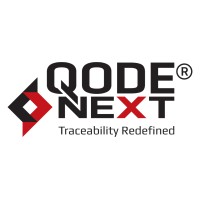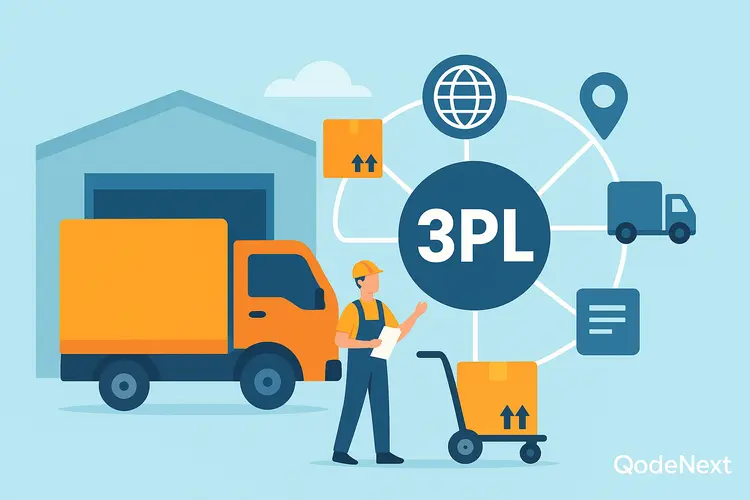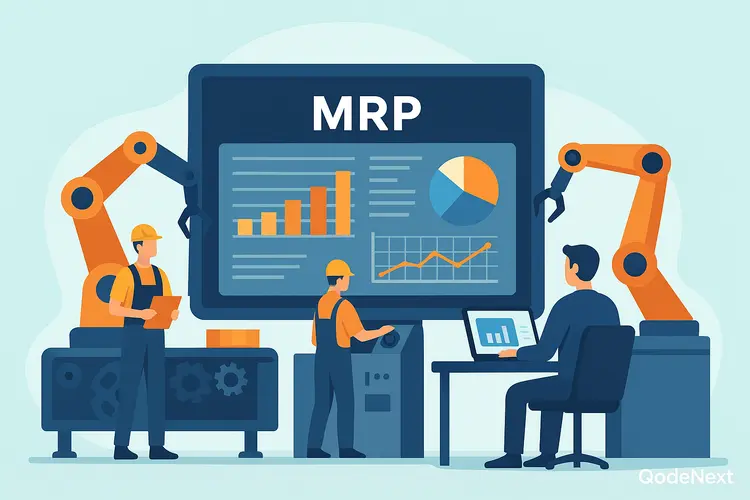Inventory accounting, or valuation, is the foundation of good financial management control in business.
It involves recording and valuing all company-owned assets at the end of each period to ensure accurate financial statements and robust inventory control. This process consists of recording the purchase of inventories, their use, and what is left, and putting a value on these items in monetary terms.
Key actions comprise valuation methods such as FIFO, LIFO and weighted average. It also involves detailed cost tracking, encompassing expenses related to production, storage, and transportation.
Let’s see the details.

How Does Inventory Accounting Work?
You must properly account for the inventory as it is according to the set business standards as well as law. This reduces the chances of overstating profits as you understand inventory value.
Profit means revenue without the cost. And you generate revenue by selling inventory. If the cost or value of your inventory is understated, the profit from the sale of the inventory will too be understated. This can inflate your company’s valuation.
Since your inventory is an asset, it affects the overall value of the company. A company manufacturing or selling an outdated item can expect to see a decrease in the value of its inventory. Unless you accurately record it in the company financials.
So, here is why you should choose inventory movement accounting.
4 Reasons to Choose Inventory Accounting
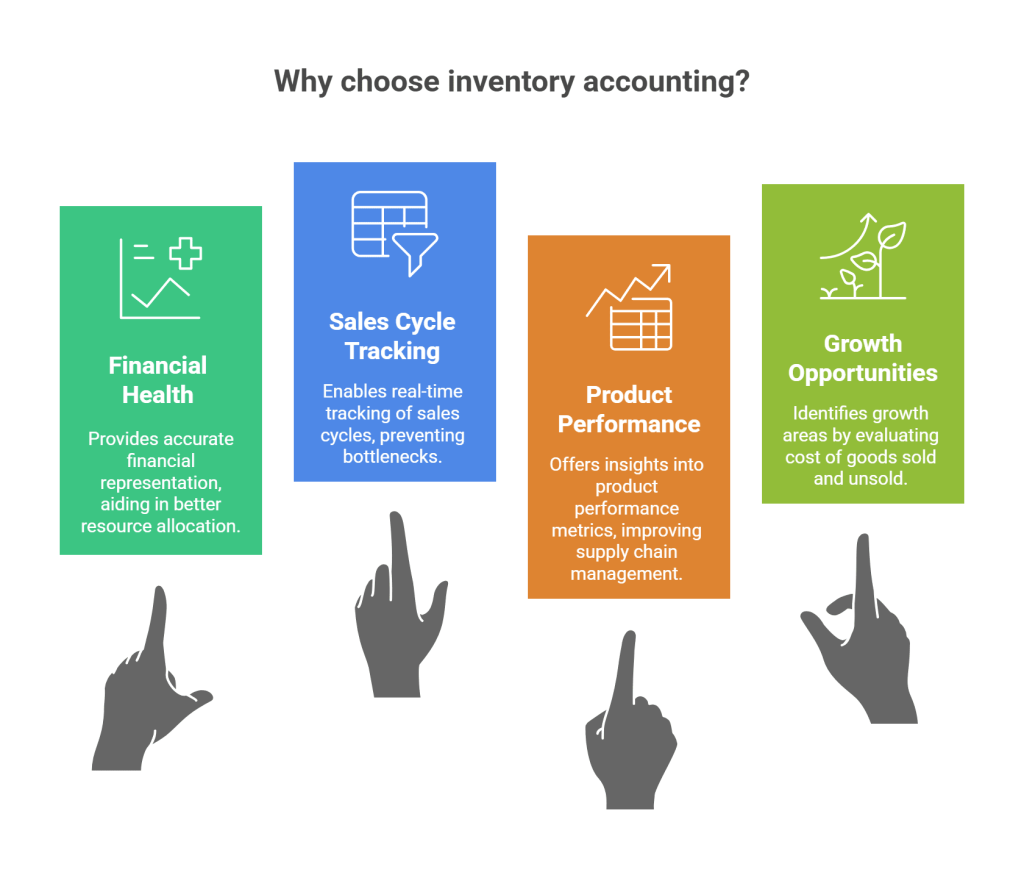
If you want streamlined operations and accurate financial reporting, you need an effective accounting process in your inventory. Here are four reasons why you must choose this for your business:
1. Accurate Representation of Financial Health
If you have clarity about your financial health, you will be able to make better financial decisions about the allocation of your resources. Fortunately, your inventory balance sheet is a good indicator of your financial situation, as it highlights your assets, liabilities, and also your equity.
With an accurate, well-defined account of your assets, which is your inventory, you can see how you are spending your time and money. This can help to improve the overall well-being of your business.
2. Track Sales Cycle
Usually, selling a product includes a series of events or phases. That’s a sales cycle. Businesses can track these cycles to recognize inventory issues early on before they become bigger problems leading to bottlenecks.
A trusted inventory accounting method allows companies to effectively implement a sales tracking process. This lets you see how these products perform in real time, eliminating any potential inefficiencies.
3. Understand Product Performance
Product performance is a collection of strategic data points that reveal the number of views on your product pages, the abandoned cart rate, and the times your product has made it to the checkout.
When you account for these numbers as inventory metrics, you gain superb visibility into the bigger picture of your business. With such online accounting and inventory information, you can assess how it will impact reorder or safety stock levels and your supply chain management.
4. Finding Growth Opportunities
Accounting is crucial in balancing the supply and demand of the goods that your company makes. Not just that, it also allows you to know the quantity and types of inventory available, which means assigning an accurate value to the items.
Accounting evaluates the cost of goods sold and unsold while the financial term ends. You get a detailed insight into where there is room for growth in case of both productivity and profitability.
With that, let’s see the methods of accounting.
4 Inventory Accounting Methods
Businesses need to evaluate their inventory. For that, they need proven methods that can help to determine the correct value of inventory. Here are some accounting methods that you can use:
1. Specific Identification
This method involves tracking with an RFID tag. The serial number or the stamped receipt dates from when a company adds it to their inventory until they can sell it. Companies usually use this valuation method for high-value, large items.
2. First-In, First-Out (FIFO)
What if the first item arriving in the inventory is the first one to be sold? That’s the assumption this method makes. Businesses usually use this to track food. Other items that can use the FIFO method are medicine and other perishable items’ industries.
3. Last-In, First-Out (FIFO)
Contrary to FIFO, LIFO assumes that companies would like to sell the newest items first and older ones later. LIFO is not as popular with most businesses as it means that they would have a lower chance of finding buyers. However, they can use LIFO if there is a chance of the prices of items increasing.
4. Weighted Average Cost
Businesses usually use weighted average cost method to evaluate the value of similar units that are difficult to distinguish and track when it comes to costs on an individual basis. To calculate it, use the total units to divide the total cost of goods in the inventory.
As you start calculating your inventory with these methods, are you curious to know what to include in your accounting? We got you.
5 Things to Include in Your Inventory Accounting
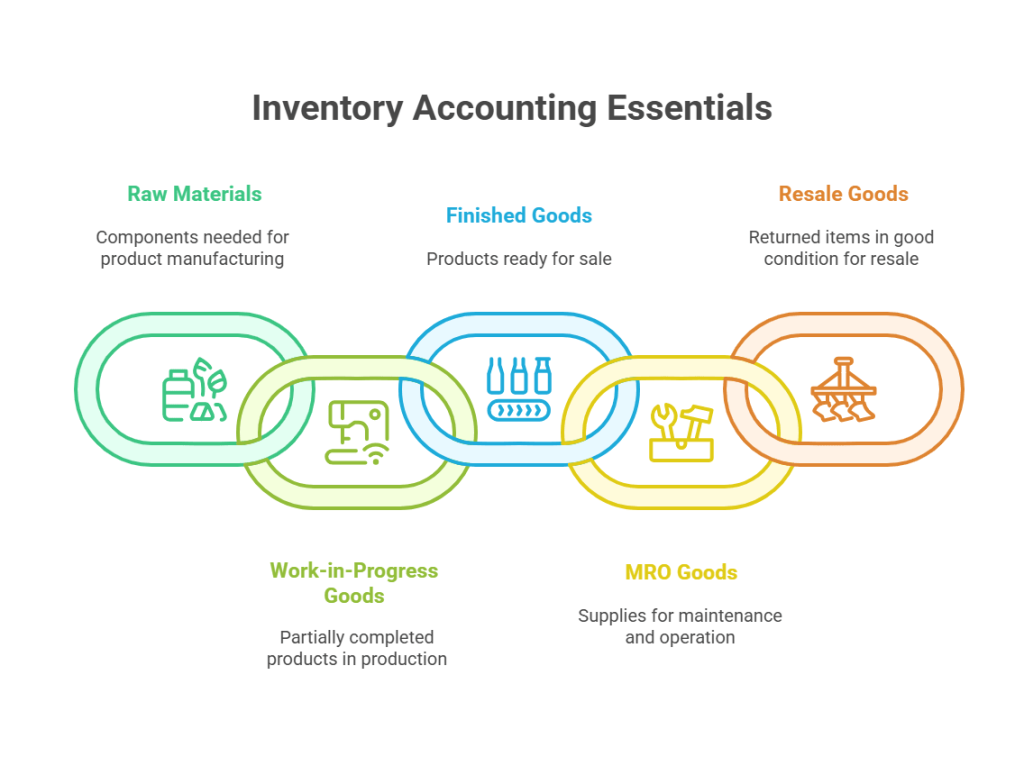
Here’s what you usually must have:
1. Raw Materials
These are the components that businesses need to manufacture their products. For instance, a chocolate-making company must list ingredients like sugar, cocoa, and butter in their inventory.
2. Work-in-Progress Goods
Work-in-progress (WIP) goods are made by the company with their raw materials and components. For instance, a fashion or garment company can include partially made dresses and shoes in their WIP inventory. With it, organizations can track the way they are using their materials and projects that professionals have not finished yet.
3. Finished Goods
These are ready for sale. There is a section of goods like transit inventory or buffer inventory. They keep accurate records of goods as you transfer them from one business to another for sale.
4. MRO Goods
These inventory accounting entries are maintenance, operating, and repair supplies. They include business industrial equipment, computers, and other materials that require it to operate. However, other supplies are not part of the end products they make.
5. Resale Goods
Customers could have returned these items for an array of reasons. That is why they are up for resale. The products are in good condition to be sold again. This allows the company to still make a profit. They are different from defective products and you can resell them.
Accounting for your inventory has certain benefits. Want to know what they are? Let’s find out.
3 Advantages of Financial Accounting Inventory
Here are three ways accounting for your inventory can help your business.
- If you want to balance the supply and demand of goods, you need inventory accounting. But that’s not all; this phenomenon also.
- Allows businesses to record the types of goods they have in their inventory and their quantities. This allows them to assign the correct inventory value.
- Enables businesses to identify top-selling products and customer preferences. Facilitates accurate calculation of cost of goods sold and unsold inventory at year-end, aiding in performance evaluation.
Conclusion
Inventory accounting is a critical tool for businesses to maintain financial accuracy and optimize operations. By effectively tracking and valuing inventory, businesses can make informed decisions, improve efficiency, and enhance overall profitability.
With expertise in key concepts like valuation methods and cost tracking, Qodenext is the best partner for successful inventory management.
FAQs: Mastering Inventory Accounting: Essential Concepts and Valuation Methods
1. How do products flow through inventory accounts?
Products start as raw materials. As they are in work-in-progress, they transform and finally become finished goods. When sold, costs shift to the COGS account on the income statement.
2. What are inventory accounting examples?
Examples include FIFO, LIFO, weighted average, and specific identification. Consistent application ensures accuracy across reporting periods.
3. Can you automate inventory accounting?
Yes, automated systems like Skubana save time, reduce errors, and improve decision-making by streamlining inventory processes.
4. Why is inventory accounting important for my business?
Inventory accounting helps you assign an accurate value to your products, which directly impacts your profit margins, tax filings, and financial statements. It ensures you have a clear picture of what you own, how it’s being used, and how it contributes to your bottom line.
5. Which inventory accounting method is best for my company?
It depends on your industry and business goals. FIFO is great for perishable goods, LIFO can help reduce taxable income during inflation, while the weighted average is ideal for bulk, indistinguishable items. Specific identification works best for high-value, unique products.
6. How often should I update my inventory records?
Ideally, your inventory should be updated in real time using inventory management software. At the very least, it should be reconciled monthly or quarterly to avoid discrepancies and keep your financials accurate.
7. What happens if I don’t account for inventory properly?
Poor inventory accounting can lead to inaccurate financial reports, overstated profits, compliance issues, tax penalties, and poor decision-making. It may even damage your business’s credibility with investors or lenders.
8. How do I value inventory that’s damaged or unsellable?
Damaged or obsolete inventory should be written down or written off based on its diminished value. This adjustment must be recorded in your financials to reflect a true and fair view of your assets and profitability.
9. Is inventory considered an asset or expense?
Inventory is classified as a current asset on your balance sheet because it represents goods that can be sold to generate revenue. When those goods are sold, the cost moves to Cost of Goods Sold (COGS) on the income statement, becoming an expense.
10. Can inventory accounting impact tax reporting?
Yes, definitely. The inventory valuation method you choose affects your reported income and therefore the amount of tax you owe. For example, using LIFO in an inflationary environment can lower taxable income, while FIFO may show higher profits and higher taxes.
